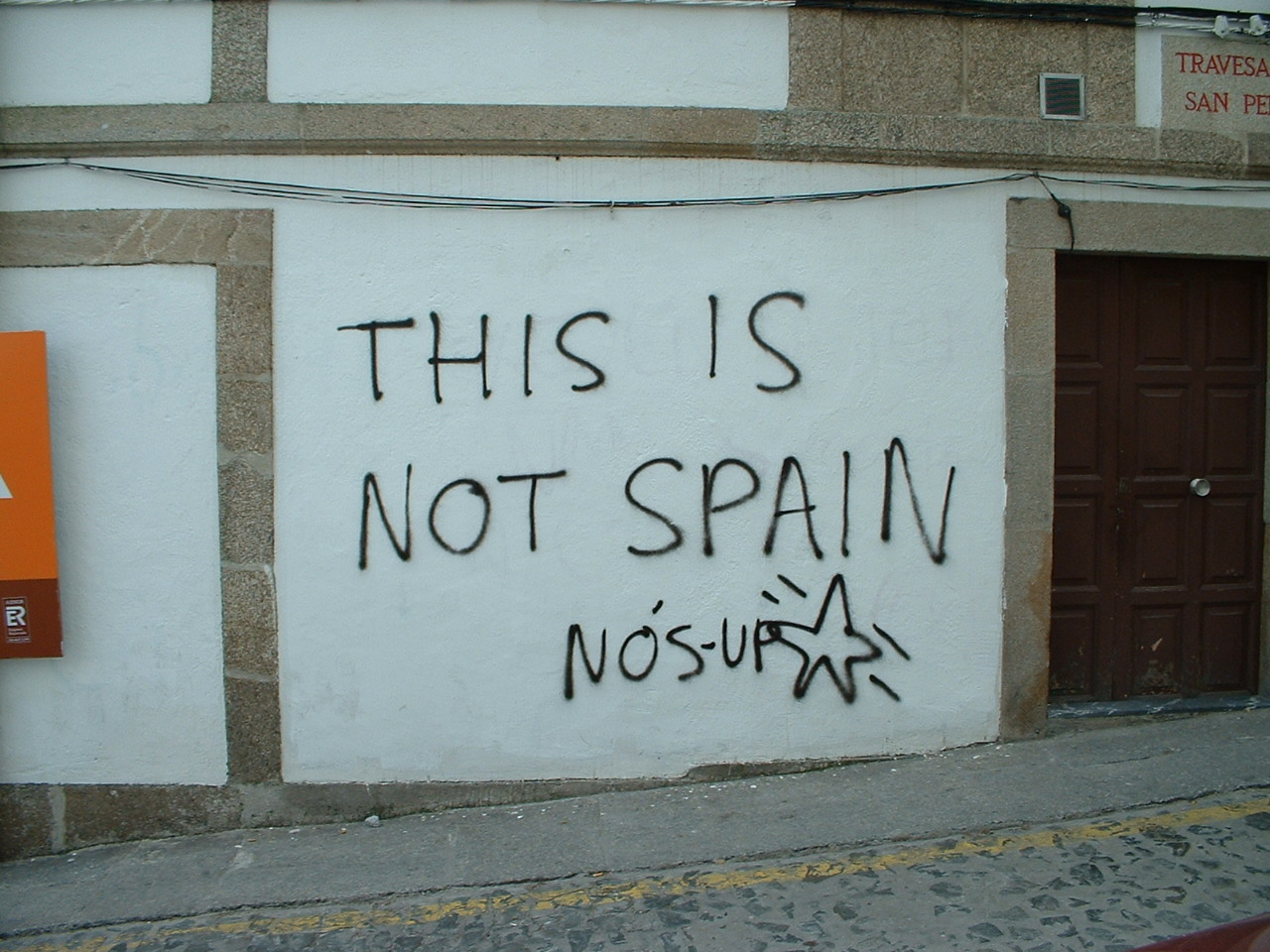10 Jul
Little Green Hot Peppers from Padrón (Vegan)
As the malaprop goes, “Ones are spicy, anothers don’t.” Indeed.
The little green hot peppers in question are known as “Pimientos de Padrón” and originally hail from the state of Galicia in Northern Spain. I first learned about said peppers while living in Santiago de Compostela several years ago. I can’t speak for the rest of Spain, but I do know you can’t spend much time in Santiago before you notice that every 10th tourist is sporting a t-shirt proclaiming the celebrity of the tasty peppers in a delightfully awkward translation from the Castilian Spanish, “LITTLE GREEN HOT PEPPERS FROM PADRÓN, ONES ARE SPICY, ANOTHERS DON’T” (pictured at right).
In Castilian Spanish, the proverb actually goes “Algunos te pican, otros no,” for which the direct translation is “Some sting you, others do not.” Which clearly doesn’t translate well to English either. Essentially, this particular saying just highlights the disparity between how Spanish and English treat indefinite pronouns, not to mention how we express spiciness – as a state versus as an action. Personally, I like to think of spiciness as an action, and I think the mistranslation captures the truth of the matter more concisely and appropriately in its inobeisance of grammar constructs. My kitchen is free from the tyranny of language rules.
Anyway. These little green hot peppers are so ubiquitous in Galicia that it’s hard to even have one drink at a bar without someone serving you a few as a free tapa. I do not exaggerate. They’re so everywhere all the time that people are giving them away for free. Which is how I quickly came to learn to prepare them myself. And the truth is, they are super easy to make as a quick appetizer or snack at home. The hardest part (in San Diego, anyway) is getting your hands on some of them. They sometimes have them at Whole Foods or other grocery stores. We usually get them from Suzie’s Farm at our nearby Farmer’s Market. You could also join their CSA and presumably have access to peppers of Padrón whenever they’re in season, as well as plenty of other awesome vegetables.
Pimientos de Padrón
- 1/2 lb peppers of Padrón
- 4 tbsp olive oil
- Lots of salt
I was taught this method of preparing peppers of Padrón by a lifelong resident of Galicia. He basically said to me, “Heat a lot of oil in a pan. When it is hot, throw in the peppers. The oil will splatter. Ignore it. Well, don’t burn yourself on it, just don’t be stupid. Afterwards, stir in an amount of salt which is far more than you think you should, and after you’ve done that, add even more. You will probably never put enough salt in, because you will think nothing should have that much salt. But you will be wrong.”
It’s true. Every time I’ve made these, I’ve thought I put an insane amount of salt in, and afterwards I’ve thought, “Gosh, that really could have used more salt.” Though they’re still delicious anyway.
So, fry them in salt, stirring frequently, until the peppers are blistered and browned. Serve hot, but not too hot (don’t want to bite into boiling oil, you know).
And by the way, beware. Some of them are spicy and others aren’t.



Recent Comments